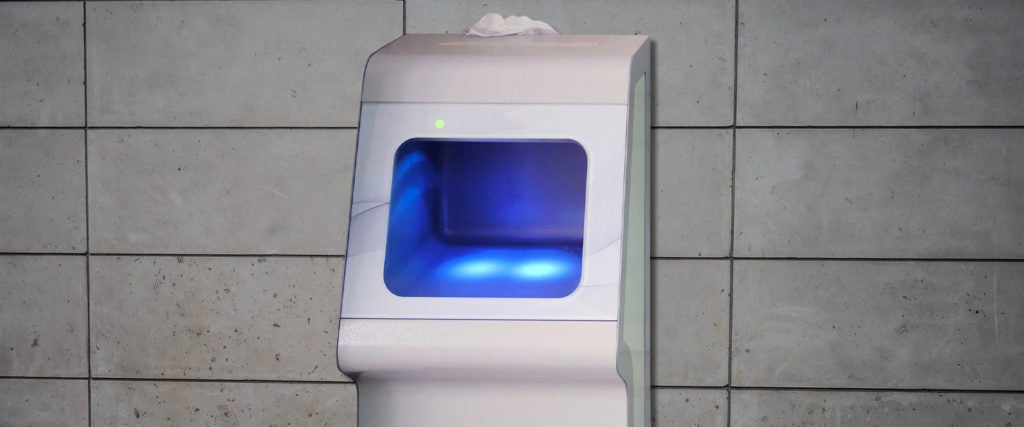Despite the fact that the country is reopening at a startling rate, we still don’t know shit about COVID-19. Cases remain relatively steady, and there’s no vaccine or cure in sight. As such, people are basically scrambling for some kind of magic wand that makes everything safe again. And some companies claim to sell one.
Though the technology has existed for decades, searches for “UV ray products for sanitation” have skyrocketed in recent months. These products range from actual wand-like devices to boxes that objects can be placed in at length. The problem is, not all of these products have been proven to work.
“UV light is one of the best microbial killers out there. After all, it’s been said that sunlight is the best disinfectant,” says Jason ‘The Germ Guy’ Tetro, author of The Germ Files and host of the Super Awesome Science Show. “That said, we now know that an effective UV light depends on two factors: strength and distance. The stronger and closer the UV light happens to be to the source, the better it will be.”
Unfortunately, a lot of the UV products available to the public don’t actually specify the strength of the rays they transmit, making their effectiveness rather dubious. There are, however, some products with wavelengths comparable to those utilized in hospital UV devices that appear to be more reliable. Further, a study published earlier this month in the American Journal of Infection Control found that PhoneSoap, a UV disinfection device for phones, removed 99.9 percent of bacteria after two 30-second cycles.
“If you have a UV light wand, you need to be sure you’re within the recommended distance and you have to hold it for the recommended time in order for it to work,” says Tetro. “A simple wave isn’t going to do the trick.”
In theory, UV rays can kill most bacteria and viruses. In fact, hospitals use specialized robot-like machines to sanitize entire rooms. There are three specific types of UV rays: UV-A, UV-B and UV-C. UV-C, the strongest and most damaging of the three, is produced by the sun but absorbed by the Earth’s atmosphere before reaching land. UV sanitation utilizes a human-made version of UV-C rays, capable of destroying the DNA of viruses and rendering them harmless.
The National Academies of Sciences, Engineering and Medicine have stated that UV-C lamps and robots are “probably” capable of killing coronavirus. But again, these hospital devices are almost nothing like the ones available to the public. Hospital UV-C devices are nearly human-sized and generate pulses of UV light over several minutes. According to a 2018 study from the science journal Health Quality Ontario, it takes between 15 to 45 minutes to disinfect a hospital room. Notably, hospitals still utilize other cleaning measures, too — UV-C devices are an added precaution against drug-resistant bacteria and health-care acquired infections.
Strangely, though, not even the hospital devices require approval from the EPA, which monitors disinfectants, before hitting the market. The fact that there’s no immediate way to verify the strength of the object makes using it for all your disinfection purposes risky. They’re also dangerous — as stated above, UV-C rays are the strongest of all UV rays, and the weaker two already cause blindness and cancer. Even in short doses, UV rays can increase our risk of developing skin and eye cancer. Because UV-C devices utilize the strongest type of UV rays and require close proximity, they definitely shouldn’t be used on people.
But if using some type of UV cleaning device on non-living objects makes you feel safer in addition to your CDC-approved disinfecting, knock yourself out. There are some decently reputable UV wands and boxes on the market, and utilizing them as directed certainly can’t hurt. Beyond using them on the body, the only real danger comes from becoming overconfident in these devices’ ability to kill coronavirus.
Until we’re certain then, it’s best to continue to also shine some light on the things we actually know will work, like washing our hands.

